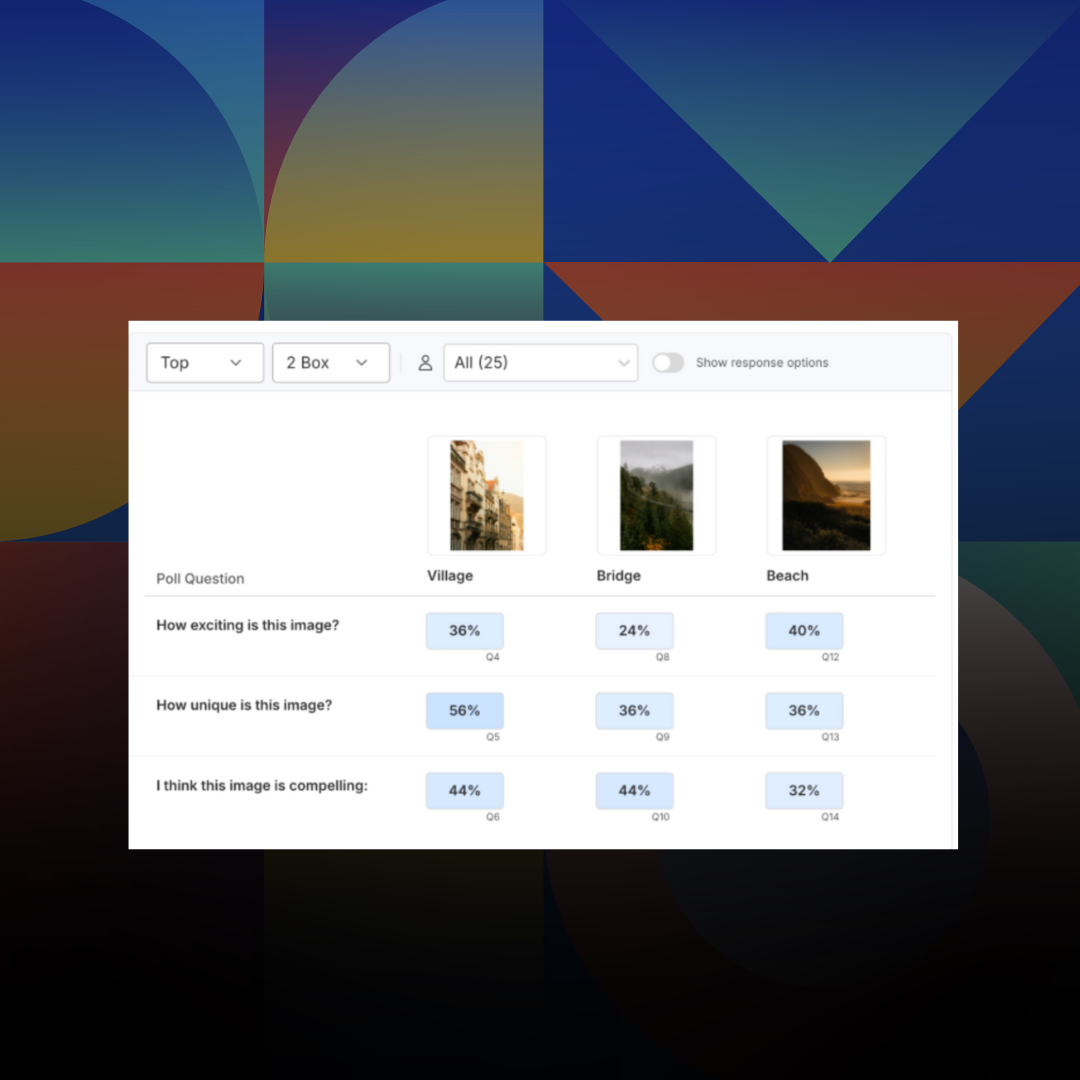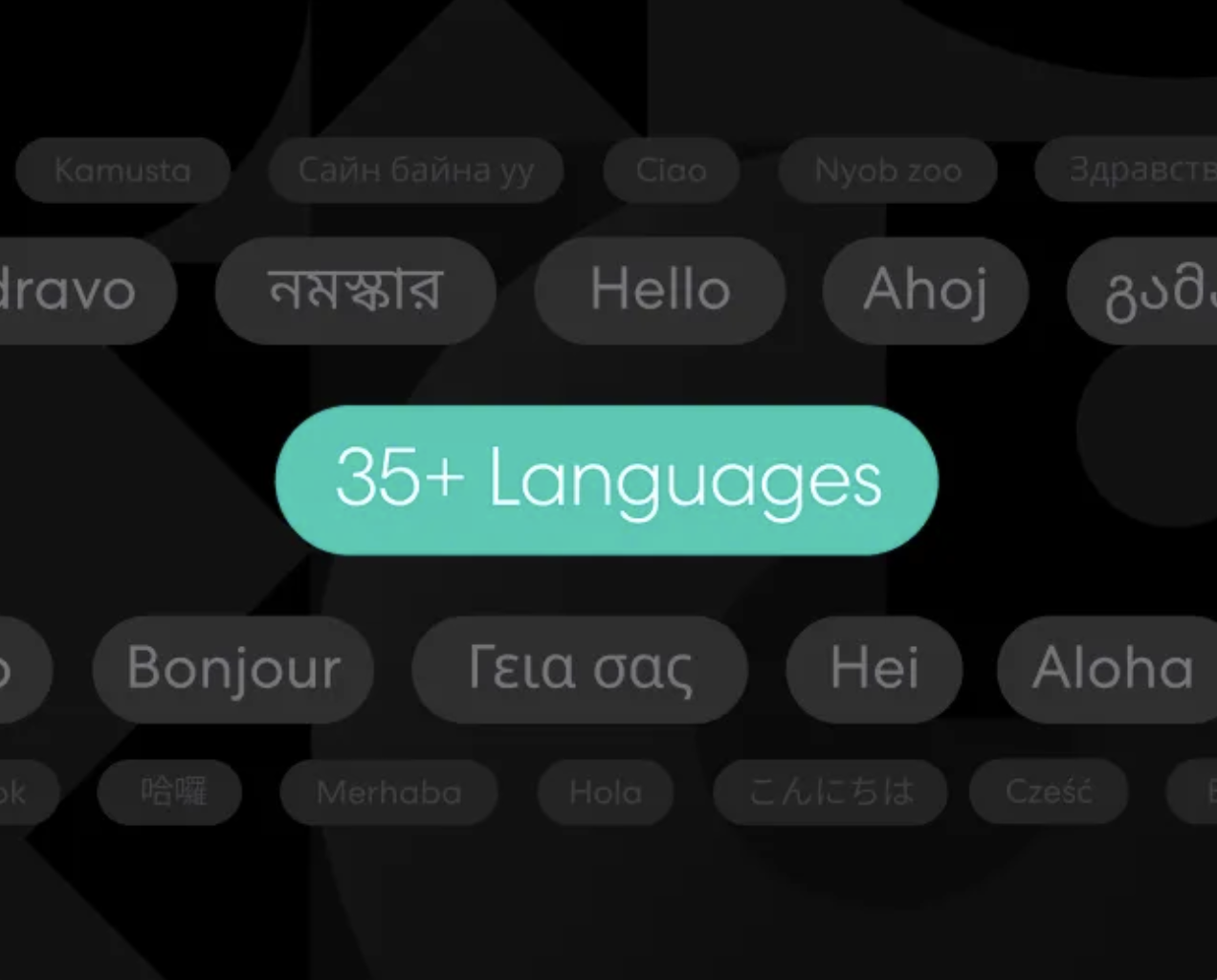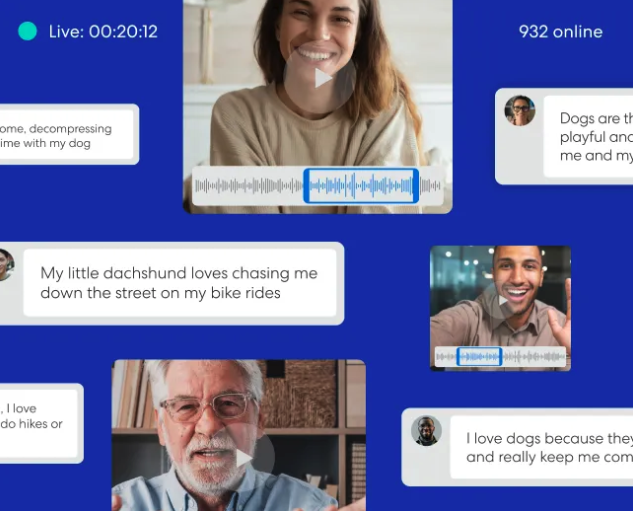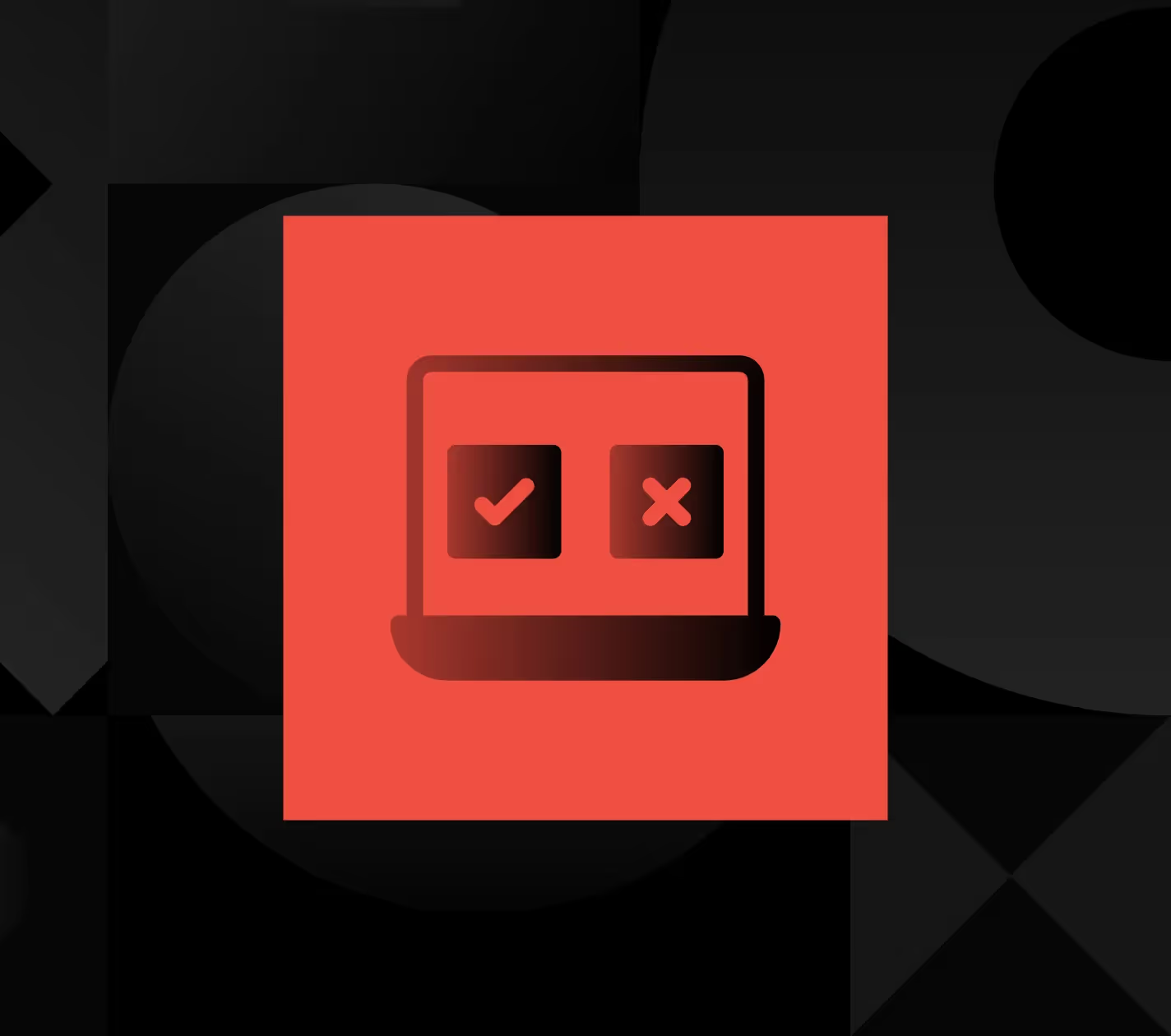
Research 101
Introducing: Poll Comparison - Streamline Concept Testing and Make Better Decisions Faster
Emmet Hennessy
November 24, 2025
Market Research
Articles

Research 101
Introducing: Poll Comparison - Streamline Concept Testing and Make Better Decisions Faster
Emmet Hennessy
November 24, 2025
Market Research
Articles

AI
Purpose-Built for Research AI is Here - a Letter from the CPO
Jessica Dubin
October 21, 2025
Market Research
Articles

AI
Purpose-Built for Research AI is Here - a Letter from the CPO
Jessica Dubin
October 21, 2025
Market Research
Articles

Advanced Research
Unlock Agile Global Insights: Using Remesh Multi-Language Conversations for Research Across Audiences
Customer Success Team
October 14, 2025
Market Research
Articles

Advanced Research
Unlock Agile Global Insights: Using Remesh Multi-Language Conversations for Research Across Audiences
Customer Success Team
October 14, 2025
Market Research
Articles

AI
The Prompt Is the New Moderator Guide
Anthony Lam
September 16, 2025
Market Research
Articles

AI
The Prompt Is the New Moderator Guide
Anthony Lam
September 16, 2025
Market Research
Articles

AI
Building an AI-Ready Research Stack: Beyond Data Preparation
Anthony Lam
September 9, 2025
Market Research
Articles

AI
Building an AI-Ready Research Stack: Beyond Data Preparation
Anthony Lam
September 9, 2025
Market Research
Articles

AI
Agentic AI for Research: A Practical Primer
Dan Reich
September 2, 2025
Market Research
Articles

AI
Agentic AI for Research: A Practical Primer
Dan Reich
September 2, 2025
Market Research
Articles

Advanced Research
Webinar Recap: Unlocking Depth at Scale - Remesh Video for Researchers
Customer Success Team
August 5, 2025
Market Research
Webinars

Advanced Research
Webinar Recap: Unlocking Depth at Scale - Remesh Video for Researchers
Customer Success Team
August 5, 2025
Market Research
Webinars

Transparency in AI: How Remesh Builds Trust Through Responsible Implementation
Ross Coudeyras
July 21, 2025
Articles

Transparency in AI: How Remesh Builds Trust Through Responsible Implementation
Ross Coudeyras
July 21, 2025
Articles

Advanced Research
Webinar Recap: Turning Employee Engagement Insights into Action with Remesh
Customer Success Team
June 16, 2025
Employee Research
Articles

Advanced Research
Webinar Recap: Turning Employee Engagement Insights into Action with Remesh
Customer Success Team
June 16, 2025
Employee Research
Articles
Hidden Insights: The Power of Participant Voting in Market Research
Discover the power of participant voting in market research to uncover hidden insights. Learn how infrequently mentioned but highly agreed upon responses are uncovered.



Not a great situation... at all: The research project is wrapping up, and the insights are looking good, but what if there's a crucial piece of information hiding in plain sight? An insight that could change the course of your product development or marketing strategy, but it's been overlooked because it wasn't mentioned frequently enough? The good news: The problem of a hidden insight can be solved, and here's how.
Uncovering the unexpected
Hidden insights can be found through the use of AI-powered participant voting. Let’s look at some examples where Remesh uncovered that 'aha' insight through integrated analysis features.
Car dealership
An online car dealership was trying to determine the right amount for a non-refundable deposit to secure a vehicle purchase. Using the Remesh platform's real-time voting feature (officially called Percent Agree), found that serious car buyers would pay higher non-refundable deposits - with one catch: The deposit had to be applied to the final purchase.
Researchers used the platform's real-time capabilities to find this insight.
"I gave them a number, 'Would you be okay with a non-refundable deposit over $500 but less than $750? Yes, no?' A majority said yes," said Bill Cullo, research consultant at Remesh. "Okay, let's keep on going. Would you be okay with a non-refundable deposit of $750 to $900?' And it started to taper off. And we were able to identify that specific number in terms of a non-refundable deposit that they'd be okay with."
This granular insight provided valuable information for the client's finance department. It even potentially opened up a new revenue stream by increasing the non-refundable deposit amount. This level of specificity and the ability to pivot and change in real-time is unique to the platform they were using.
Healthcare hidden insights
Suzanne Walsh, research consultant at Remesh, shared another example from a study with healthcare professionals.
The study tested claims about an eyewear product. Most participants felt the claims were similar to those made by other brands. However, one insight surfaced through voting. Healthcare providers heard specific feedback from their patients, so they put what they heard to the test. Other participants then highly rated this insight when it was mentioned. This emphasized its importance and prompted researchers to investigate further.
Another example in the arena of employee listening tried to answer, "what music should we play over the speakers in the office during the work day?" Respondents shared their music tastes until one person responded: "I don't care what music you listen to, as long as it’s through headphones." Many voted on that answer and even though it was only mentioned by one participant initially, the agreement was high.
We aren't surprised that happened. Over the last decade, we've found that some of the most valuable insights come from responses that participants infrequently mention but highly agree upon.
What are hidden insights and why do they happen?
Hidden insights are valuable pieces of information that participants may not immediately notice or frequently mention. When researchers uncover hidden insights, that's when the magic happens.
Hidden insights happen when participants don't mention certain aspects of their experience or opinions without being prompted. They may assume that their perspective is common knowledge, not particularly important or they might be afraid to say something outside the norm. These insights often resonate strongly with other participants when surfaced and presented to the group.
The greatest utility of the Remesh platform is not in exploring the question of what percentage thinks this or that. The greatest utility is discovering why people feel, think, or do what they do.
Companies suspect that they know what they're going to see. By using market research tools like participant voting and asking the right questions, researchers can uncover valuable insights that they may not have been actively seeking, which can ultimately shape their understanding of the topic at hand. Let participants guide the conversation.
The dangers of missing hidden insights
Overlooking hidden insights can lead to missed opportunities. These opportunities include product improvement, marketing strategy optimization, and a better understanding of consumer needs.
An example: A skincare study set out to uncover the challenges women face in achieving their desired skin outcomes. As expected, many participants mentioned common issues like oily or dry skin. However, through the use of participant voting, a hidden insight emerged that revealed a more significant obstacle for consumers.
The sheer number of available skincare products overwhelmed women. This abundance made it difficult for them to determine which products would work best for their specific skincare concerns, leading to a "paralysis by analysis."
"Turns out the real challenge, the real obstacle was, there were so many options, and they didn't know where to start," said Bill.
Armed with this knowledge, skincare brands could take action. They were able to consider simplifying their product lines and make it easier for consumers to identify the right products for their specific skincare needs. Additionally, brands could provide clearer guidance and educational resources to help customers navigate the available options and make informed decisions.
By uncovering this hidden insight, the study provided valuable information that could shape the future of the skincare industry. It demonstrated the power of participant voting in revealing overlooked obstacles.
How participant voting works
Remesh facilitates participant voting through a question type called "Ask Opinion." The platform shows participants 8-10 randomly selected verbatim responses from the group. It then asks them to vote on whether they agree or disagree with each statement. The platform's algorithm then calculates a percent agreement score for each verbatim. It predicts how the entire group would have voted based on the sample of responses.
Researchers can view the percent agreement scores for each verbatim. This allows them to identify areas of consensus among participants quickly. The percent agreement score is a unique platform feature.
"This could only be generated or created using an AI algorithm," Suzanne said. "The answer comes at us in literally a minute or less."
Conclusion
Participant voting is a valuable tool in market research to uncover hidden insights and provide a more comprehensive understanding of consumer perspectives. Clearly, AI-powered features like participant voting can help uncover hidden insights faster and better than traditional messages could.
-
Lorem ipsum dolor sit amet, consectetur adipiscing elit. Suspendisse varius enim in eros elementum tristique. Duis cursus, mi quis viverra ornare, eros dolor interdum nulla, ut commodo diam libero vitae erat. Aenean faucibus nibh et justo cursus id rutrum lorem imperdiet. Nunc ut sem vitae risus tristique posuere.
-
Lorem ipsum dolor sit amet, consectetur adipiscing elit. Suspendisse varius enim in eros elementum tristique. Duis cursus, mi quis viverra ornare, eros dolor interdum nulla, ut commodo diam libero vitae erat. Aenean faucibus nibh et justo cursus id rutrum lorem imperdiet. Nunc ut sem vitae risus tristique posuere.
-
More

Introducing: Poll Comparison - Streamline Concept Testing and Make Better Decisions Faster

.png)

.png)
Read More

.png)
.png)
.png)

.png)

.png)
Learn More

.png)
.png)
.png)


Unlock Agile Global Insights: Using Remesh Multi-Language Conversations for Research Across Audiences

.png)

.png)
Read More

.png)
.png)
.png)

.png)

.png)
Learn More

.png)
.png)
.png)
Stay up-to date.
Stay ahead of the curve. Get it all. Or get what suits you. Our 101 material is great if you’re used to working with an agency. Are you a seasoned pro? Sign up to receive just our advanced materials.




